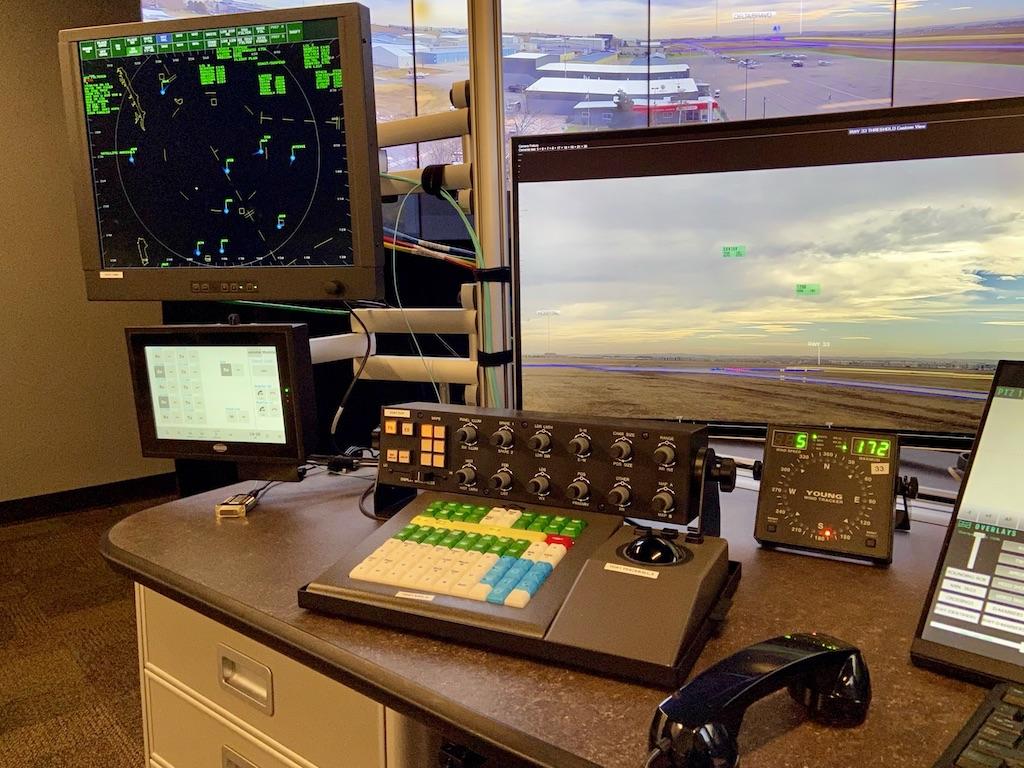Viewpoint: The Case For Non-Federal ATC Displays

A STARS Tower-MiniElite system would be similar to this STARS display at the FNL digital tower.
Controllers in VFR airport traffic control towers use a variety of tools to detect, sequence, and provide runway separation for aircraft. This is primarily done visually, augmented with binoculars, and communication with aircraft on the surface and in the local airspace.
Track-based surveillance (radar) displays, when available, provide an additional tool that greatly improves the controller’s situational awareness, which in turn enhances both efficiency and safety. An additional benefit is that a radar display can reduce controller workload and stress resulting from the improved situational awareness. In order for a controller in a VFR tower to use a certified tower radar display, they must receive the required training.
The Federal Contract Tower Program is one of the most successful programs in the FAA with some 262 towers that provide a cost-effective way for small and medium-sized airports to provide airport traffic control. It is extremely difficult, if not impossible, for a contract tower to obtain a Standard Terminal Automation Replacement System (STARS), the only approved certified tower radar display, no matter how compel-ling the need.
In a January 2023 memo, the FAA has mandated that the agency “will not support, purchase, install, or maintain any new tower radar display systems. FAA Technical Operations will only support existing equipment. Consequently, the FAA will not support existing Standard Terminal Automation Replacement System/Certified Tower Radar Display equipment requests or accept further applications for new systems, regardless of whether a facility meets the qualification criteria.”
Further complicating this position is a November 2022 memo from FAA Technical Operations that states: “[F]ederal Contract Towers are not approved to use commercial tools in an operational capacity at this time.” By commercial tools, the agency means web-based applications such as Radar 24, etc. Many VFR controllers, out of desperation, use commercial apps in direct contravention of the directive.
Prior to these memoranda from the agency’s Air Traffic and Tech Ops organizations, when an airport was deemed eligible to obtain a STARS system, it executed a Reimbursable Agreement with the FAA that covers the cost of the equipment, installation, and some period of maintenance.
Now, even if a contract tower airport is willing to execute a Reimbursable Agreement, the FAA, in the majority of cases, rejects the request, presumably based on the cost to maintain the system past the term in the agreement. This creates the untenable position that while the FAA will not provide STARS systems to airports, it will also not permit airports to provide this tool through a Reimbursable Agreement.
The Colorado Digital Tower Project installed a STARS system to sup-port testing of its digital tower. The system is fully operational and adapted for the airspace at the Northern Colorado Regional Airport (FNL), which is a Federal Contract Tower Program airport and has an operating mobile air traffic control tower. The FAA has indicated that it intends to remove the system, ignoring the fact that the state is actively working to bring in a successor vendor to complete the digital tower pro-ject. This makes little or no sense, as the system was fully funded through the Colorado project and removal will incur a cost to the FAA.
For controllers to have situational awareness of the local airspace and beyond is critically important for airports with a complex operational environments--specifically, those that have scheduled air service, aircraft with varying operational characteristics, and pilots with vastly different experience levels. This also applies to airports with challenging terrain requiring complicated instrument approaches.
The answer to this dilemma is for FAA to certify a non-Federal display that can be purchased and maintained by airports. The FAA has been working to develop requirements for years to no avail. There are several companies that have displays that could potentially be certified. Without a firm set of requirements, any company would have to think twice before attempting to seek approval. This has been vividly demonstrated with FAA requirements creep that resulted in the failure of the two digital tower projects at FNL and Leesburg Executive Airport in Virginia. Just ask the two vendors involved.
RTX (formerly Raytheon Technologies Corp.) has a system that could fit the bill called STARS Tower-MiniElite, which uses existing FAA-certified STARS hardware and software. It can operate as a stand-alone system without National Airspace System (NAS) interfaces, but also in-corporates a gateway that allows for the ingestion of NAS data, if al-lowed, to flow in one direction, eliminating the concern of corruption.
In colloquial terms, this system could be the “low hanging fruit,” as security is addressed via the gateway and the equipment has already gone through the rigorous FAA certification process. By eliminating unnecessary components and functionality, this system could represent the answer, provided it can be produced at a price point an airport can afford. A major advantage would be that the system would be maintained by RTX under contract with the airport.
Whether the FAA will move forward in a timely manner to approve a non-Federal radar display remains to be seen.
William E. Payne is the program manager of the Colorado Digital Tower Project




